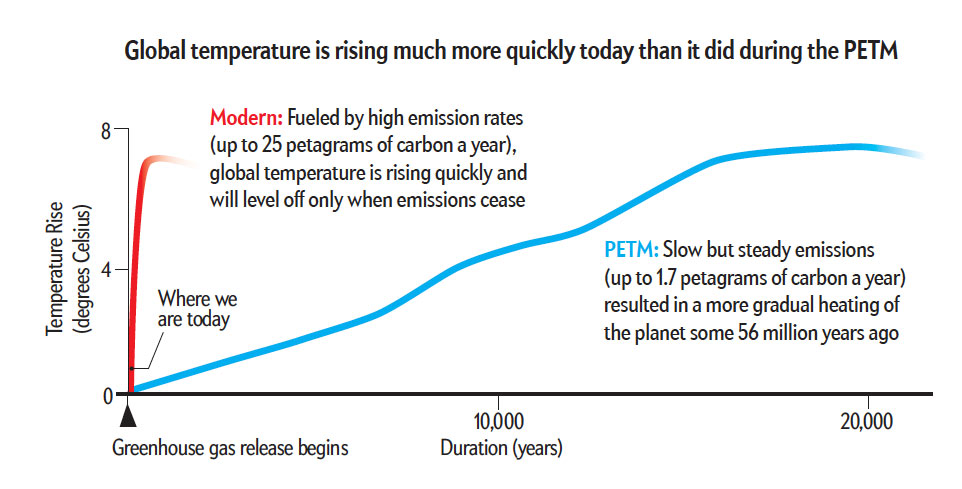
I've been writing a lot about disbelieving climate, change lately. Tonight, I'm continuing the discussion, but this time, I'm combining it with my professional interest in ancient life to examine the last time climate changed anywhere near as quickly as it is now. Watch PBS Eons The Last Time the Globe Warmed.
Imagine an enormous, lush rainforest teeming with life...in the Arctic. Well there was a time -- and not too long ago -- when the world warmed more than any human has ever seen. (So far)The Paleocene-Eocene Thermal Maximum (PETM) marked the end of an epoch — literally, as it ended the Paleocene with the Eocene beginning when it abated. New geologic time periods are marked by changes in the fauna and the PETM was no different. The PETM Wikipedia page includes the following extinctions and originations.
The PETM is accompanied by a mass extinction of 35-50% of benthic foraminifera (especially in deeper waters) over the course of ~1,000 years – the group suffering more than during the dinosaur-slaying K-T extinction...Contrarily, planktonic foraminifera diversified, and dinoflagellates bloomed. Success was also enjoyed by the mammals, who radiated extensively around this time...Humid conditions caused migration of modern Asian mammals northward, dependent on the climatic belts. Uncertainty remains for the timing and tempo of migration.All of this happened with an event that, as rapid as it was, happened much more slowly than modern climate change. For the effects of something as severe as what's happening now, I suggest my readers click on the New York Times' The Planet Has Seen Sudden Warming Before. It Wiped Out Almost Everything.
Dr. Deutsch and Justin Penn, a graduate student, recreated the world at the end of the Permian Period with a large-scale computer simulation, complete with a heat-trapping atmosphere and a circulating ocean.Eep! The article notes that humans are releasing cabron dioxide even faster than the Siberian volcanoes did at the end of the Permian, which is known as The Great Dying. The only saving grace is that we will not release as much carbon dioxide as then. Still, it looks like I may have to write an entry about The Great Dying as well. Stay tuned.
As the Siberian volcanoes flooded the virtual atmosphere with carbon dioxide, the atmosphere warmed. The ocean warmed, too — and according to the model, it began losing oxygen.
Some parts lost more than others. On the surface, for example, fresh oxygen was produced by photosynthetic algae. But as the ocean warmed, its circulatory currents also slowed, the model demonstrated.
Oxygen-poor water settled to the bottom of the oceans, and before long, the deep was gasping.
Rising temperatures and plunging oxygen must have made huge swaths of the oceans uninhabitable. Some species survived here and there. But most disappeared completely.
No comments:
Post a Comment